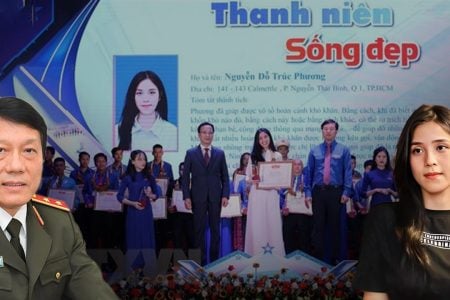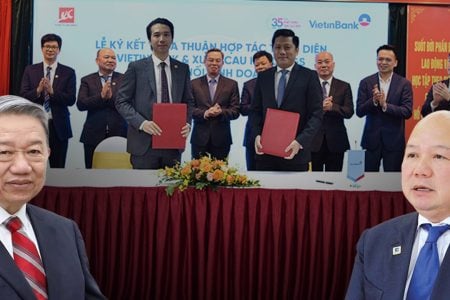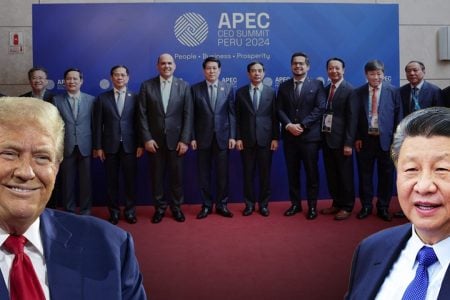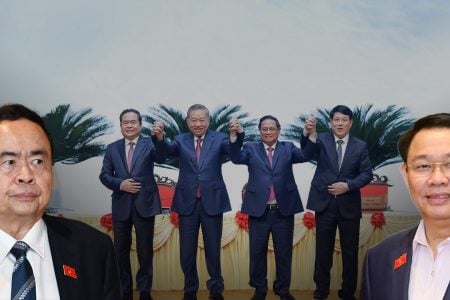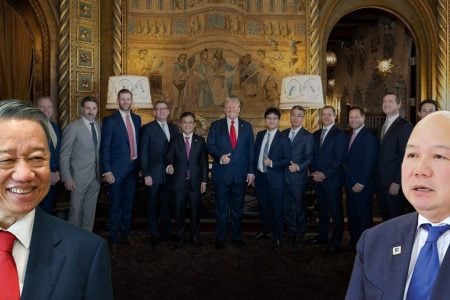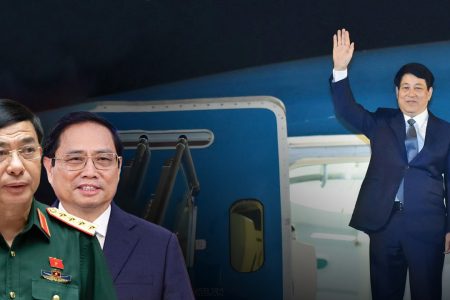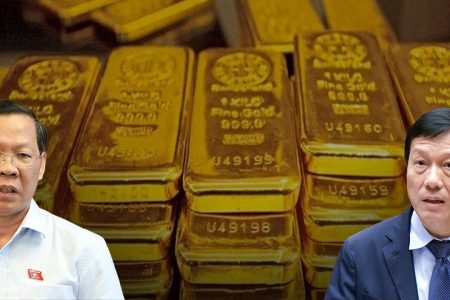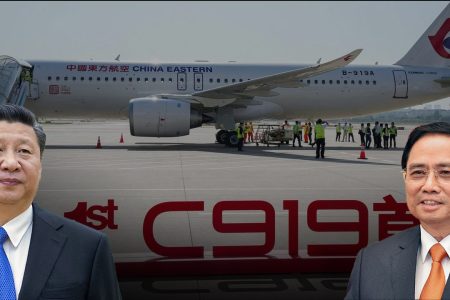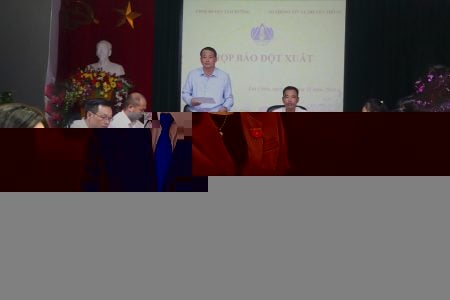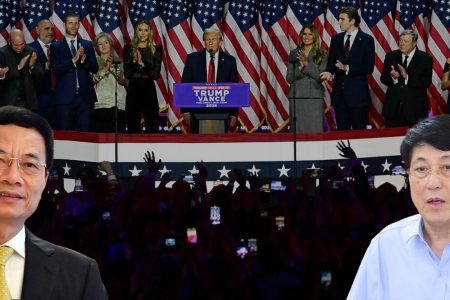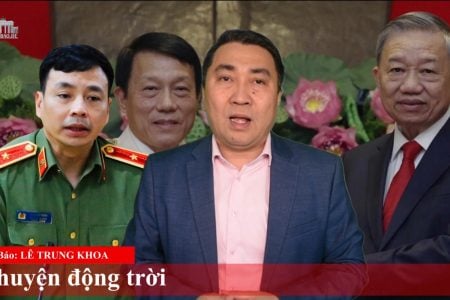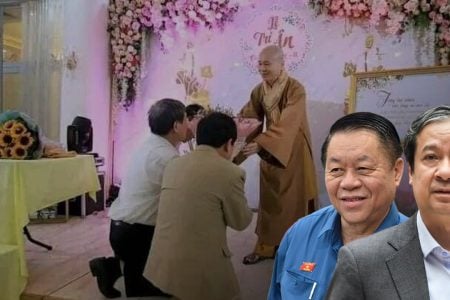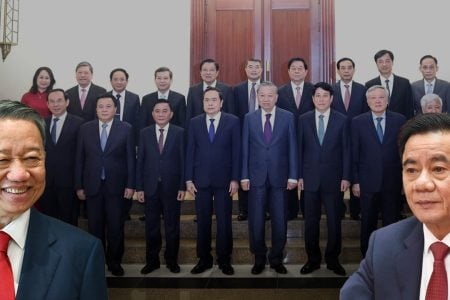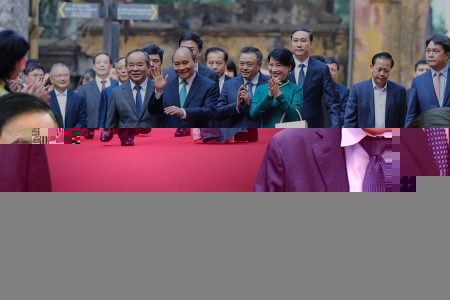
Ukraine’s current position between the West and Russia is reminiscent of the position of Southeast Asia, including Vietnam, in the US-China strategic war. Connecting the tension system between the two largest powers in the world today, starting from the Cold War, as well as the rights disputes in the South China Sea (Vietnam calls it the East Sea) between Vietnam and China, dating from the 1970s, are analyzed in a work of Paul Valery Montpellier University 3 published in March 2022.
RFI Vietnamese interviews university history Professor Pierre Journoud, editor of Unangle stratégique à l’épreuve. La Chine, les États-Unis et l’Asie du Sud-Est depuis 1947.
*****
RFI: The book is a compilation of references by 21 authors and editors starting in 1947. Why choose this column? Why “A strategic triangle” and where is Vietnam in this triangle?
Prof. Pierre Journoud: Why is the book called A Strategic Triangle? Because each corner of an equilateral triangle can be clearly seen. Southeast Asia has been a region of competition between China and the United States since the Cold War. We started the book in 1947 because that was the year that the Cold War officially started in Europe. The first event about the relations between the two communist and anti-Communist blocs that shaped international relations and caused a series of impacts around the world, naturally in Southeast Asia and those around them were analyzed in our book’s first half. 1947 was also the year Mr. Aung San, one of the founders of Great Burma, Aung San Suu Kyi’s father, was killed. The year was also the year of civil war in China, etc.
It is true that in Asia, a historically significant point is in the period 1949-1950. In 1949 with Mao Zedong came to power and China followed communism, with great influence from Moscow. In the following year, Vietnam also moved in this direction, the war with France continued, and Vietnam was attracted by the cold war scene. Indeed, the Democratic Republic of Vietnam, declared by Ho Chi Minh on September 2, 1945, was first recognized by Mao Zedong, followed by the Soviet Union and the entire Communist bloc. There was another state established by France to counterbalance Ho Chi Minh’s State, which was recognized by the United States, Great Britain, and the Western “free world” at that time. It is a system of conflict caused, in Southeast Asia.
The current situation in Southeast Asia is indeed very concerning because of the fierce competition between the two major powers in Southeast Asia, the US, and China, usually in a context different from the Cold War era. But those elemental links of US-China competition can still be seen, dating back to the beginning of the Cold War. Mao Zedong won the civil war and wanted to turn China into a great power. When the US can militarily enter Vietnam, they understand that intention, as well as the strategist, can very well understand Mao Zedong’s commitment to Southeast Asian countries. The Chinese President supported all Communists in Southeast Asia, especially in Vietnam, which led to an increasingly serious incident and dragged Vietnam into a chain war. These events are covered in great detail in the book.
RFI: For the first time, on February 14, 2022, the Vietnamese prime minister presided over the official commemoration of 64 Vietnamese soldiers who died at Gac Ma (Johnson South Reef) in 1988 when it was attacked by China. This is a traumatic event in a series of rising tensions in the region, updated in part 2 of the work on “new warnings on the 3rd Indochina battlefield.” Can you explain more?
- Pierre Journoud: It is also natural to me that the senior Vietnamese government honored 64 soldiers of the Vietnamese Navy who died in the Truong Sa (Spratlys) in 1988.
In fact, the conflict over the Hoang Sa (Paracels) and the Truong Sa in the East Sea, has existed for a long time, colonized only from 1930 to the end of World War II, but became more acute from the 1970s. It is a surprise that China and Vietnam’s established school of each side’s thematic rights in the South China Sea dates back very early. For example, through my presentation in this book, based largely on international documents, especially those of the United Nations, the United Nations archives of documents show that the conflicts were established as early as the 1970s, earlier than the border war in 1979.
In summary, this conflict began in the diplomatic forum, at the UN level, even before the land conflict in 1979. It should be recalled that China has been a full member of the United Nations since 1979. 1971 and throughout that decade, China had easier access to the United Nations, while the Socialist Republic of Vietnam joined the United Nations in 1977. Since then, the Chinese and Vietnamese delegations to The United Nations have sought to convince all UN members of the accuracy of their position.
We also realize that the conflict of 1979, of course for other causes, also stemmed from the maritime domain. Up to now, this aspect has been very little exploited, but it is very clearly stated in the archives of the United Nations. In 1979, the Vietnamese delegation, then led by Ambassador Ha Van Lau, reflected that many Chinese ships infiltrated Vietnam’s waters in the East Sea. We have consulted many important reports on the origin of this conflict.
Next, in the Geo-political section of the book, some authors refer to the position of the United States, China, as well as some Southeast Asian countries, especially Indonesia. We see that for quite a long time, Indonesia took a rather dovish stance with Beijing, but then kept its distance because the Jakarta government also had to face China’s expansion and had to be tougher in terms of defending their sovereignty.
Of course, this is not the only theme of the book. However, the papers on this issue help to better understand all aspects of the conflict on land, at sea, internationally, diplomatically, at the UN level, at the ASEAN level, etc.
RFI: Many experts predict that if World War 3 happens, it will be in the Indo-Pacific region due to US-China tensions and competition. Will this concern still be justified when war broke out in Ukraine again?
- Pierre Journoud: Yes. That’s a big question, a serious question. I would like to be cautious in making an accurate prediction because the Ukraine case makes it clear that even experts on Russia and Ukraine failed to anticipate the speed and ferocity of the Russian invasion of Ukraine. Observers do not expect President Putin to make such a decision given the relatively peaceful international and European relations, although tensions have increased since Russia’s annexation of the Crimean peninsula in 2014.
In the Indo-Pacific, it is true that there have long been major tensions between Beijing and Washington in the South China Sea and more broadly in Southeast Asia, especially since Xi Jinping became president of China. Next is the tension between countries with sovereignty disputes in the East Sea, including China and Vietnam. The concern is that the problem keeps happening. China is increasingly sending more warships to neighbor countries’ waters, sending fighter jets to patrol the Taiwan Strait, or holding unilateral and multilateral exercises in those waters. Many times, Chinese and American warships almost collided with each other, sometimes with French warships because recently Paris also sent its ships, submarines, and aircraft carriers to the area.
It is very difficult to predict whether in the coming months or years there will be a conflict that would be armed and possibly on the scale of today’s Ukraine if China were to invade Taiwan. And if it happens, it will have the same scenario as Ukraine and will cause a global shock. The United States will have to respond in one way or another. We don’t know exactly how that will turn out, but both sides are prepared.
However, the worst is unlikely to happen because it can be seen that in the current war in Ukraine, President Biden and President Xi Jinping have talked on the phone many times. It, therefore, does not rule out the possibility that Beijing and Washington can find a voice to reduce tensions somewhat, not only over the war in Ukraine but also over the conflict, although not currently armed but covert, between US and China in Southeast Asia, especially in the South China Sea.
Both these powers are suspicious of each other and have ambitions to dominate maritime space, especially in the Pacific and South China Seas. China wants to push the United States out of its borders as far as possible because it is not in Beijing’s interest to see Washington increase its presence in the South China Sea. The US wants to play a major role in the Pacific, maintaining the presence of the 7th Fleet, and conducting “innocuous” voyages whether it is battleships, destroyers, aircraft carriers, etc.
It is possible that the US and China will come to a fairly negotiable solution and thereby lead to a solution on a regional scale. This is also the wish of ASEAN member states, which are negotiating a Code of Conduct in the South China Sea. However, it is also possible to envision an incident, for example of a local nature, turning into a regional conflict. This is the theory that many experts fear. I am not exactly one of the most pessimistic because channels of dialogue and negotiation still exist, especially through ASEAN and in other institutions. Anyway, we can’t rule anything out.
RFI: Will the war in Europe make the US somewhat neglect the South China Sea? Will Washington not seek to further upset Beijing due to concerns that China supports and helps Russia evade sanctions? Does the Russia-China alliance entail risks or even threats to the Indo-Pacific region?
- Pierre Journoud: There are two questions in this section. Regarding the first question regarding the impact of the war in Ukraine on whether the US and the West in general, ignore the situation in the South China Sea, I think not. First of all, the United States is a global power, keeping an eye on every potential conflict zone in the world. The policy of pivoting to Asia dates back to the Obama administration, focusing more military, financial, and economic means on Asia, especially in Southeast Asia, which is still continued by later presidents, although Mr. Trump may not be as supportive of a multilateral policy as his predecessor.
The war in Ukraine may not distract the US from focusing on the Indo-Pacific region, especially in the South China Sea because tensions still exist, and the conflict is far from being resolved. China is increasingly consolidating its presence in the region, militarizing the artificial islands it occupies in the Spratlys and Paracels. A few days after Russia attacked Ukraine on February 24, China again increased its defense budget, already at a very high level, outstripping all the budgets of countries in the region and now ranked second in the world, just behind the US. In addition, Beijing is increasingly modernizing its fleet. Every two years, the Chinese fleet is said to double in tonnage. According to a Pentagon document that I looked up in 2021, considerable effort and investment have made the Chinese Navy the world leader in tonnage, although it may not be in terms of quality or workmanship.
In my opinion, at the moment nothing has changed in the region due to the impact of the war in Ukraine. This, however, leads to a second question regarding Russia. China is a major partner of Russia. People talk about the alliance, although it is not known where this alliance will go, it is clear that Beijing supports Putin’s Russia and does not mention President Putin’s “invasion of Ukraine.”
It can be seen that China is not comfortable because the decision of the Kremlin does not seem to be discussed with Beijing and hinders China’s ambitions in maintaining peace, keeping a certain order for the country to expand its influence, and possibly domination the region. Russia’s “special military operation” has hindered the plans and ambitions of the Chinese leaders, affecting the certain success so far of the Moscow-Beijing axis, along with a few countries to redraw the current international relations, to form a model to replace the American model and to change somewhat the nature of the international system.
Putin’s policy has the opposite effect because it has made European countries more united, healing the decaying NATO. NATO countries, the European Union, are worried that a tragic war like Ukraine will spread to this bloc and eventually make these countries form a front, not against Russia but against Putin. It is not clear where the end will go: starting with Crimea, then the Donbas, then Ukraine, maybe tomorrow the Baltic countries, which were influenced by the Soviet Union.
I think Mr. Xi Jinping is keeping a close eye on the situation in Ukraine. The Chinese president may propose to negotiate a political solution to soon end the war that is tarnishing Russia’s image. Anyway, everyone is waiting to see what position Xi Jinping will take, either keeping his distance from his Russian counterpart or mediating. Given the relatively good relationship between Moscow and Beijing, and China’s economic, financial, and military potential, it seems that only Mr. Xi Jinping has the ability to impose, or nonetheless direct a solution in this direction.
RFI Vietnamese would like to thank professor of contemporary history Pierre Journoud, Paul Valéry University – Montpellier 3.
Professor Pierre Journoud is the author and co-author of many research works on Vietnam: Paroles de Dien Bien Phu (with Professor Hugues Tertrais), De Gaulle et le Vietnam (1945-1969), Dien Bien Phu. La fin d’un monde…
Translated by Thoibao.de from RFI: https://www.rfi.fr/vi/t%E1%BA%A1p-ch%C3%AD/t%E1%BA%A1p-ch%C3%AD-vi%E1%BB%87t-nam/20220404-viet-nam-trong-tam-giac-chien-luoc-my-trung-dong-nam-a







